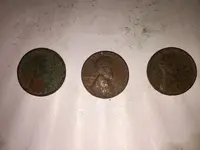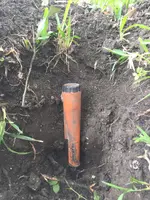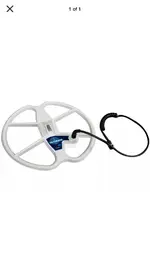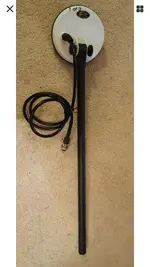This method was used in the early days of detecting....BUT "The Coil By-Pass Method" still apply s to the Fisher CZ series and the F-75 and Teknetics T2 series...most tone machines.
Iron targets and in particular Thick round pieces like a " rusty round washers" or "Bent square nails" will give high #s and High tones...or in two tones " Low Grunt" and "High Scream" .
So in the field... you get a high tone and then a high #s ...slowly pull the coil to you as you swing slowly over the target.
As you come off the edge of the target ...if the sound still hits high and the #s stay close you are on non Ferris .
As you come off the edge of the target...if the sound is a grunt,and the #s jump around you are on Iron.
Try this and dig according to this method an see if this helps.
Gary
My Friend Monte tells it this way much more technical !
'EPR' .. This is a technique that I was using back in the early days of conventional TR detectors in '71, before Discriminators were popular, to help 'classify' probable iron targets. It worked great with the good TR's I used, and still do with my Compass Coin Hustler and Yukon 99B, and can work with other Discriminators. It is especially useful with out modern, motion-based Discriminate models that often have more trouble with some iron, nickel, steel and other challenging-shaped magnetic metal targets, especially things like crimp-on bottle caps.
'EPR', short for 'Edge-Pass Rejection', is a technique where you isolate or pinpoint the location of a questionable target that gives you a good or iffy audio response and, if you have visual TID, a jumpy or unsteady read-out. Then, you continue to make a side-to-side sweep across the target. Not a long-length sweep, just enough for the search coil to just completely cross the located target.
While doing so you work the search coil back towards you so that the targeted location is swept across with the front 'edge' of the search coil. This is not always going to work the same from detector-to-detector or from one type and size search coil to a different one due to the differences in the shape and effect of the EMF, the coil's internal positioning, and how the detector's circuitry processes the received signal.
Usually, the 'EPR' technique works well with a Concentric search coil when the target is about ½" to 1" inside the coil's diameter towards the center from the outer 'edge' of the coil. NOT right at the very 'edge' of the coil but close to it. Most often, a Double-D coil might not display a proper 'EPR' until the targeted spot is near the outer edge to maybe 1" or so away from the outer coil's edge.
What does it do? Many problem iron-based targets cause us problems because man has shaped them into a more conductive shape. Again, a rusty or even unused bottle cap is a prime example. While many early conventional TR-Discriminators could reject a bottle cap, the modern motion-based units we use today might have problems with those and some other iron-type targets. Both coil types, but especially DD's seem to be challenged by them and 'false signal' a lot. We sweep over a bottle cap or other annoying targets and get a reasonably good audio response and maybe a so-so good TID. Reasonably good, but kind of a questionable audio or somewhat inconsistent TID that hints to a potential ferrous based piece of junk.
Time to use 'Quick-Out' and, if that doesn't work or to add an extra measure of classification, we employ the 'EPR' technique. If the target is a non-ferrous metal coin, such as a US 1¢, 5¢ 25¢ or other coin, you will continue to get a good repeatable audio response and an OK TID as you draw the coil back towards you while just sweeping across the targeted spot until you get to the 'edge' area and lose detection of the coin.
If the target is a bottle cap, piece of rusty tin, an iron bolt or washer, etc., then when you find the functional 'edge' area of your detector/coil doing an 'Edge-Pass' you will get an obvious 'Rejection' of the iron target. If your Discrimination is low for more iron targets, then more will be heard with a low tone (if your detector is working in a 2-Tone, 3-Tone or other multi-tone function that can indicate iron with a lower tone) and will also display a proper 'Iron ID' range visual response. I Relic Hunt most of the time, but use this technique a lot for both Relic Hunting and Coin Hunting needs.


 and that means that all my old spots are now new again.
and that means that all my old spots are now new again. 

 and that means that all my old spots are now new again.
and that means that all my old spots are now new again. 




